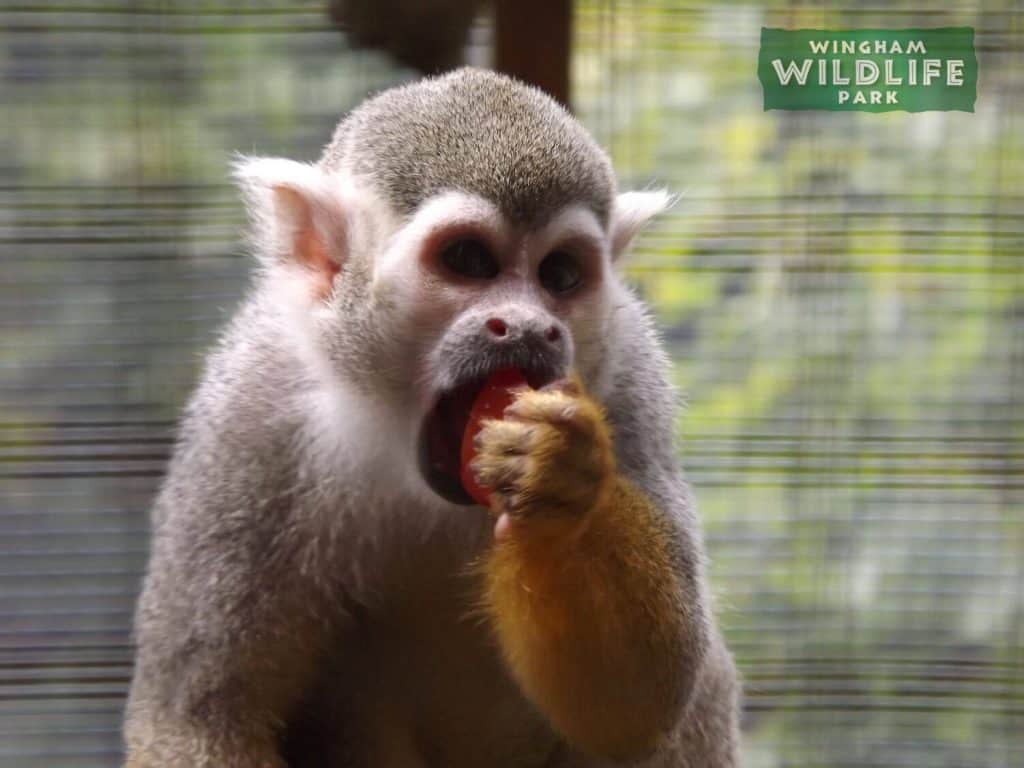
Squirrel Monkey Natural History
Size
The body of this primate ranges in size from 10 to 14 inches, with the tail being around 2 inches longer than the body in most cases. This is a slender animal with females weighing only 20 pounds in some cases, while the much heavier males can reach 45 pounds.
Habitat and Distribution
This South American primate can be found in the forests of Brazil, Venezuela, Guyana, Surinam and Columbia.
Age
The average age of this animal in captivity is around 20 to 25 years.
Diet
The majority of this animal’s diet is made up of fruit, however they have a high protein requirement and as such will also eat a lot of animal prey, such as insects, frogs, birds and even bats.
Groups and Breeding
These animals can live in troops made up of 50 to 100 individuals, however they have been recorded living in troops up to 500 strong. Within these groups there is a very strict male dominated hierarchy. During the breeding season males will become very promiscuous and females will be mated by several males, ready to give birth 6 months later at the start of the wet season, where the food is most abundant. Females will give birth to just a single baby.
Threats
Even though this animal is somewhat protected under CITES law it is still hunted for food as well as being collected for both the pet trade and for laboratory use. However the greatest threat faced by them is the deforestation of their habitat.
Interesting Facts
These animals will smear urine on their feet and tail as well as rubbing food items in to their tail. It is thought that this practice is designed to help them mark out scent trails.
The Squirrel Monkey During Your Day Out in Kent
Our Squirrel Monkeys, Frodo and Samwise are on display in ‘Rainforest SOS’ which is also home to a bachelor group Black and White Colobus, Black Howler Monkeys and Bornean Orangutans. Frodo and Samwise also share an enclosure with two Goeldis monkeys.
The more you know…
Want to know more about this animal? Check out our keeper blogs about them here.